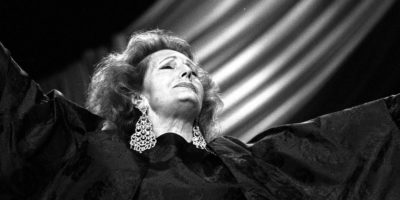
Portrait photograph of women’s rights activist Elizabeth Cady Stanton – Wikimedia Commons
Top 10 Unbelievable Facts about Elizabeth Cady Stanton
Elizabeth Cady Stanton was a writer and activist who was a leader of the women’s rights movement in the U.S. during the mid-to-late-19th century. She was the main force behind the 1848 Seneca Falls Convention, the first convention to be called for the sole purpose of discussing women’s rights. Her demand for women’s right to vote generated controversy at the convention but quickly became a central tenet of the women’s movement.
Stanton was the primary author of the first three volumes of the History of Woman Suffrage, a massive effort to record the history of the movement, focusing largely on her wing of it. She was also the primary author of The Woman’s Bible, a critical examination of the Bible that is based on the premise that its attitude toward women reflects prejudice from a less civilized age.
Here are 10 Unbelievable Facts about Elizabeth Cady Stanton.
1. Stanton was the first woman to run for Congress

Elizabeth Cady Stanton – Wikimedia Commons
Women could run for public office even though they couldn’t vote, a situation that Cady Stanton sought to challenge. She ran for the U.S. House of Representatives becoming the first woman to do so as an independent representing New York in 1866.
She knew that she was treading new ground when she announced she was running. “I have no political antecedents to recommend me to your support, but my creed is free speech, free press, free men, and free trade—the cardinal points of democracy,” she explained in a letter.
She received only 24 votes of the 12,000 cast, perhaps a reflection of the fact that no women could vote. However, her audacious campaign most likely inspired others. Six years later Victoria Woodhull became the first female candidate for president. It wasn’t until 1916 that a woman, Rep. Jeannette Rankin of Montana, was elected to Congress.
2. Elizabeth organized the first women’s rights convention
Cady Stanton, Mott, and their colleagues announced: “a Convention to discuss the social, civil, and religious condition and rights of women.” The event, also known as the Seneca Falls convention, was attended by 300 people. The first day, July 19, was planned as an all-women discussion, and July 20 was open to the public.
Stanton took centre stage with a reading of her “Declaration of Sentiments,” a rewriting of the Declaration of Independence that proclaimed, “We hold these truths to be self-evident: that all men and women are created equal.” The document was accompanied by a series of resolutions to be ratified by those in attendance.
Much to the displeasure of her fellow organizers, who feared they would be ridiculed, Stanton insisted on including a measure supporting women’s right to vote. The resolution passed after considerable debate, forever changing the direction of the movement and establishing Stanton as one of the most provocative thinkers on the subject of women’s rights.
3. Cady’s Father wished she was a boy

Elizabeth Cady Stanton by Napoleon Sarony – Wikimedia Commons
Cady Stanton’s father, Daniel Cady, served in Congress and the New York State Assembly and was a New York Supreme Court judge. He and his wife Margaret had 11 children; five daughters, including Elizabeth, and one son would survive to adulthood. When her brother Eleazar died at age 20, Elizabeth’s father allegedly said to her, “Oh my daughter, I wish you were a boy!”
Elizabeth responded by throwing herself into studying Greek, chess, and horse riding, vowing “to make her father happy by being all a son could have been,
She spent much of her childhood observing the goings-on at her father’s law office, where she was disgusted to learn of the many inequitable laws restricting women’s freedom and ability to inherit property. Daniel Cady did encourage his bright and self-confident daughter when she was upset that laws could not help one of his female clients.
4. Elizabeth spent her honeymoon at an Anti-slavery convention
In 1839, Elizabeth Cady met and fell in love with an abolitionist lecturer and journalist named Henry Stanton. The two were married a year later in 1840.
After the wedding, the new couple headed to the World Anti-Slavery Convention in London, where Henry was a delegate and Elizabeth was forced with other female attendees into the back of the lecture hall
Elizabeth was shocked by the hypocrisy of their male counterparts to have women delegates excluded from the proceedings and banished to a visitors’ gallery. She and fellow abolitionist Lucretia Mott resolved to begin a political crusade on behalf of their gender.
5. Stanton and Susan Anthony became an unstoppable pair in Championing for women’s equality

Elizabeth Cady Stanton (seated) with Susan B. Anthony (standing) – Wikimedia Commons
In 1851, Elizabeth met the Massachusetts-born Quaker and reformer Susan B. Anthony. The two women struck up a lifelong friendship. In their shared goal of achieving women’s equality, Anthony handled the campaigning and speeches, while Cady Stanton did the lion’s share of the writing from her home in Seneca Falls.
While Anthony objected to Cady Stanton allowing her role as a mother to interfere with her reform work, she also helped her take care of the seven Stanton children. Stanton returned to the road after her children were grown, but Anthony continued to serve as the face of the women’s rights movement for the rest of their lives.
6. Elizabeth was a critic of the 14th and 15th Amendments to the Constitution
Stanton strongly supported the abolition of slavery, but she and Anthony courted controversy during Reconstruction by opposing the 14th and 15th Amendments. This is because it enshrined black voting rights in the Constitution.
Their objections centred on the use of the phrase “male citizens” in the text of the 14th Amendment. Rather than risk a permanent setback in their fight for the vote, the pair urged their fellow abolitionists to hold out for an amendment that included both men and women of all races.
Stanton’s pleas failed to stop either amendment and by 1869, the debate had splintered the women’s rights movement into two rival factions.
7. Stanton published the first-ever Woman’s Bible
Stanton made a career out of pushing the envelope, but her ideas were occasionally too revolutionary even for her fellow activists. In 1895, she published the first volume of “The Woman’s Bible,” a scathing examination of the role organized religion played in denying women their rights.
Stanton argued that the Bible taught the subjection and degradation of women and that equality demanded a revision of its lessons. The book was an instant bestseller, but it drew harsh criticism from Christian members of the National American Woman Suffrage Association. Ignoring protests from Susan B. Anthony, the Association later voted to formally denounce the book and distance itself from its author. Stanton would remain an outsider in the suffrage movement for the rest of her life.
8. Elizabeth tried to donate her brain to science.

Elizabeth Cady Stanton by Veeder – Wikimedia Commons
Stanton had tried to ensure that she would still help women’s causes after her death. In 1887, fellow women’s rights activist Helen Gardener asked Stanton to will her brain to Cornell University for postmortem preservation and study.
Stanton had told her family of her plan, and Gardener announced her wishes publicly. Gardener said Cady felt that a brain like hers would be useful for all time in the record it would give the world. This would see for the first time, the scientific record of a thinker among women.
At the time, there were widespread claims that the shape and size of men’s brains made them naturally smarter than women, and Gardener hoped that an examination of Stanton’s grey matter would disprove them once and for all.
However, following her death in 1902, her children refused to honour the agreement.
9. Cady believed that Bikes would liberate women
Biking had become popular by the 1890s and was strongly associated with the modern woman of the latter part of the 19th century, liberated from stuffy social and marital expectations.
At 80, Stanton told The American Wheelman magazine that the bicycle will inspire women with more courage, self-respect, and self-reliance. This would eventually lead to women’s suffrage.
Elizabeth and Susan Anthony have been credited with saying, “A woman is riding to suffrage on the bicycle.” They could see beyond the convenience of getting from one point to another. For them, bikes symbolized new freedom for women.
10. Stanton’s daughter was also a prominent women’s rights activist

Elizabeth Cady Stanton and her daughter, Harriot by Wikimedia Commons
In her later years, Stanton fought for women’s rights alongside her youngest daughter, Harriot Stanton Blatch. A graduate of Vassar College, Harriot joined the struggle in the 1880s and later assisted her mother and Susan B. Anthony in completing their multi-volume book, History of Woman Suffrage.
After Stanton’s death, she founded the Equality League of Self-Supporting Women. This was an organization that enlisted thousands of low-income factory and garment workers into the suffrage movement. The group played a key role in finally securing passage of the 19th Amendment in 1919. She also collaborated with her brother Theodore on a 1922 book about their mother’s life and legacy.
Planning a trip to Paris ? Get ready !
These are Amazon’s best-selling travel products that you may need for coming to Paris.
Bookstore
- The best travel book : Rick Steves – Paris 2023 – Learn more here
- Fodor’s Paris 2024 – Learn more here
Travel Gear
- Venture Pal Lightweight Backpack – Learn more here
- Samsonite Winfield 2 28″ Luggage – Learn more here
- Swig Savvy’s Stainless Steel Insulated Water Bottle – Learn more here
Check Amazon’s best-seller list for the most popular travel accessories. We sometimes read this list just to find out what new travel products people are buying.









